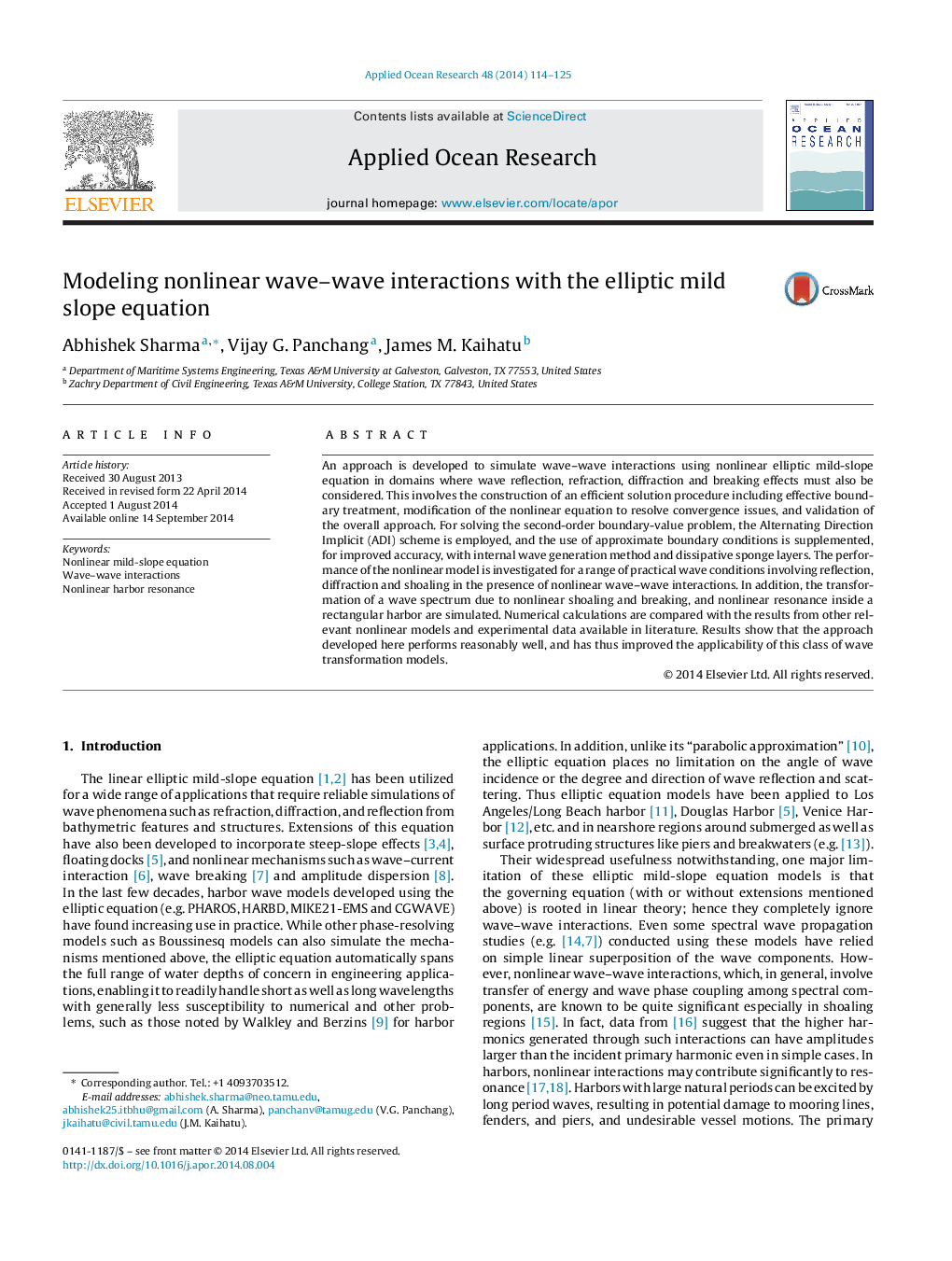| Article ID | Journal | Published Year | Pages | File Type |
|---|---|---|---|---|
| 1719993 | Applied Ocean Research | 2014 | 12 Pages |
•Second-order nonlinear wave–wave interactions are critical in nearshore regions.•Nonlinear elliptic mild-slope equation is considered for modeling purposes.•Effective method for boundary treatment is developed.•Numerical model is validated, and the nonlinear harbor resonance is simulated.
An approach is developed to simulate wave–wave interactions using nonlinear elliptic mild-slope equation in domains where wave reflection, refraction, diffraction and breaking effects must also be considered. This involves the construction of an efficient solution procedure including effective boundary treatment, modification of the nonlinear equation to resolve convergence issues, and validation of the overall approach. For solving the second-order boundary-value problem, the Alternating Direction Implicit (ADI) scheme is employed, and the use of approximate boundary conditions is supplemented, for improved accuracy, with internal wave generation method and dissipative sponge layers. The performance of the nonlinear model is investigated for a range of practical wave conditions involving reflection, diffraction and shoaling in the presence of nonlinear wave–wave interactions. In addition, the transformation of a wave spectrum due to nonlinear shoaling and breaking, and nonlinear resonance inside a rectangular harbor are simulated. Numerical calculations are compared with the results from other relevant nonlinear models and experimental data available in literature. Results show that the approach developed here performs reasonably well, and has thus improved the applicability of this class of wave transformation models.
